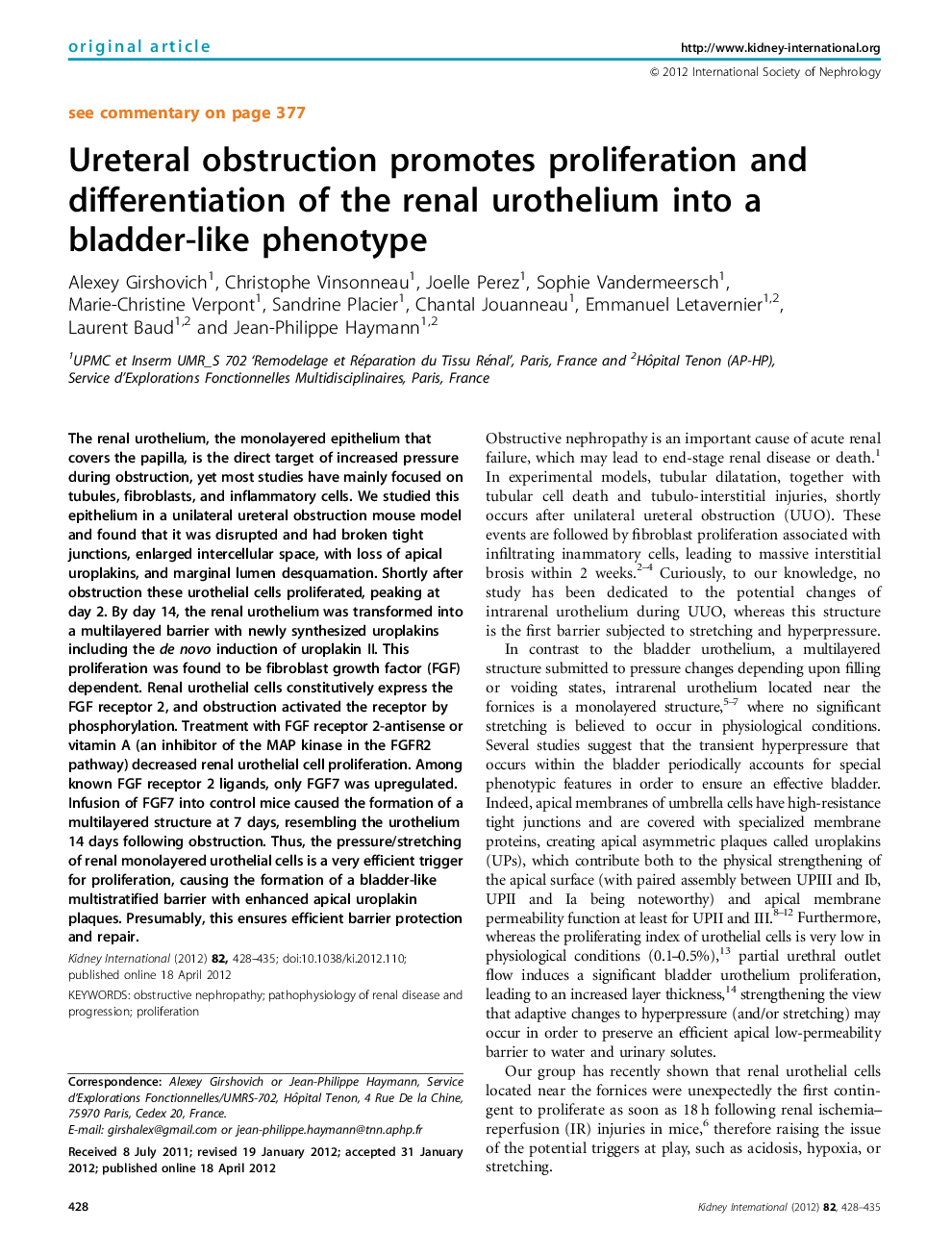| Article ID | Journal | Published Year | Pages | File Type |
|---|---|---|---|---|
| 3885754 | Kidney International | 2012 | 8 Pages |
The renal urothelium, the monolayered epithelium that covers the papilla, is the direct target of increased pressure during obstruction, yet most studies have mainly focused on tubules, fibroblasts, and inflammatory cells. We studied this epithelium in a unilateral ureteral obstruction mouse model and found that it was disrupted and had broken tight junctions, enlarged intercellular space, with loss of apical uroplakins, and marginal lumen desquamation. Shortly after obstruction these urothelial cells proliferated, peaking at day 2. By day 14, the renal urothelium was transformed into a multilayered barrier with newly synthesized uroplakins including the de novo induction of uroplakin II. This proliferation was found to be fibroblast growth factor (FGF) dependent. Renal urothelial cells constitutively express the FGF receptor 2, and obstruction activated the receptor by phosphorylation. Treatment with FGF receptor 2-antisense or vitamin A (an inhibitor of the MAP kinase in the FGFR2 pathway) decreased renal urothelial cell proliferation. Among known FGF receptor 2 ligands, only FGF7 was upregulated. Infusion of FGF7 into control mice caused the formation of a multilayered structure at 7 days, resembling the urothelium 14 days following obstruction. Thus, the pressure/stretching of renal monolayered urothelial cells is a very efficient trigger for proliferation, causing the formation of a bladder-like multistratified barrier with enhanced apical uroplakin plaques. Presumably, this ensures efficient barrier protection and repair.
